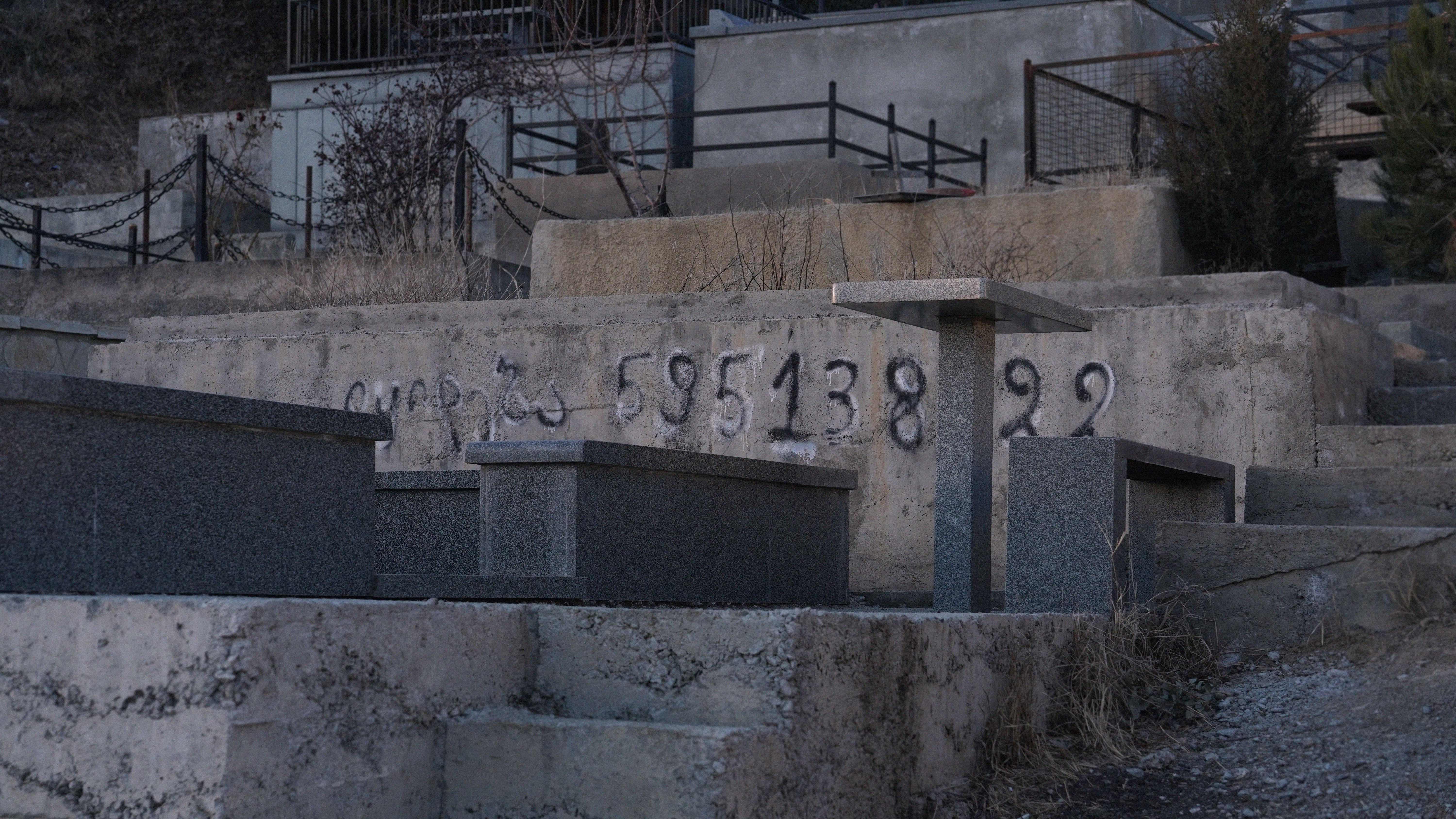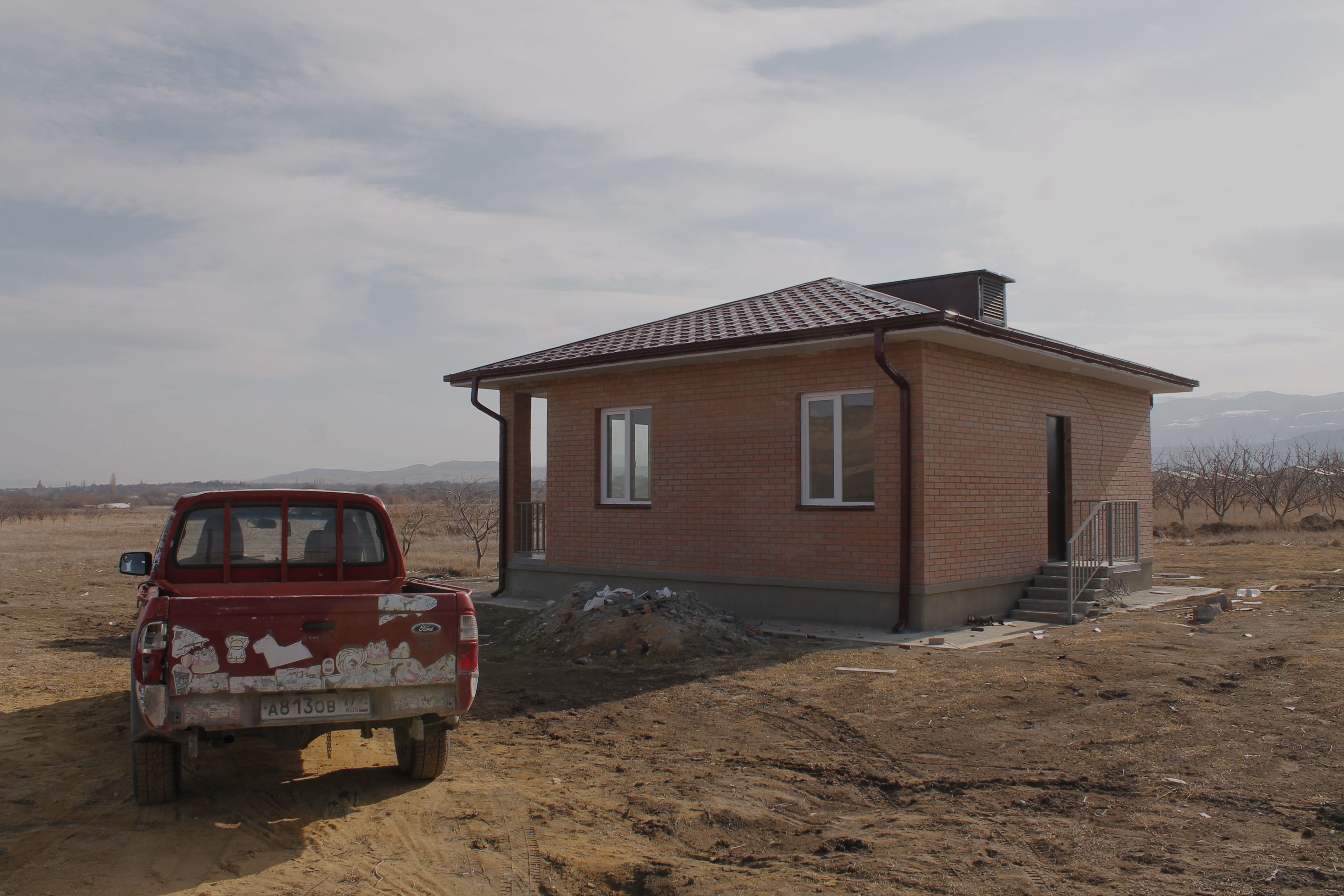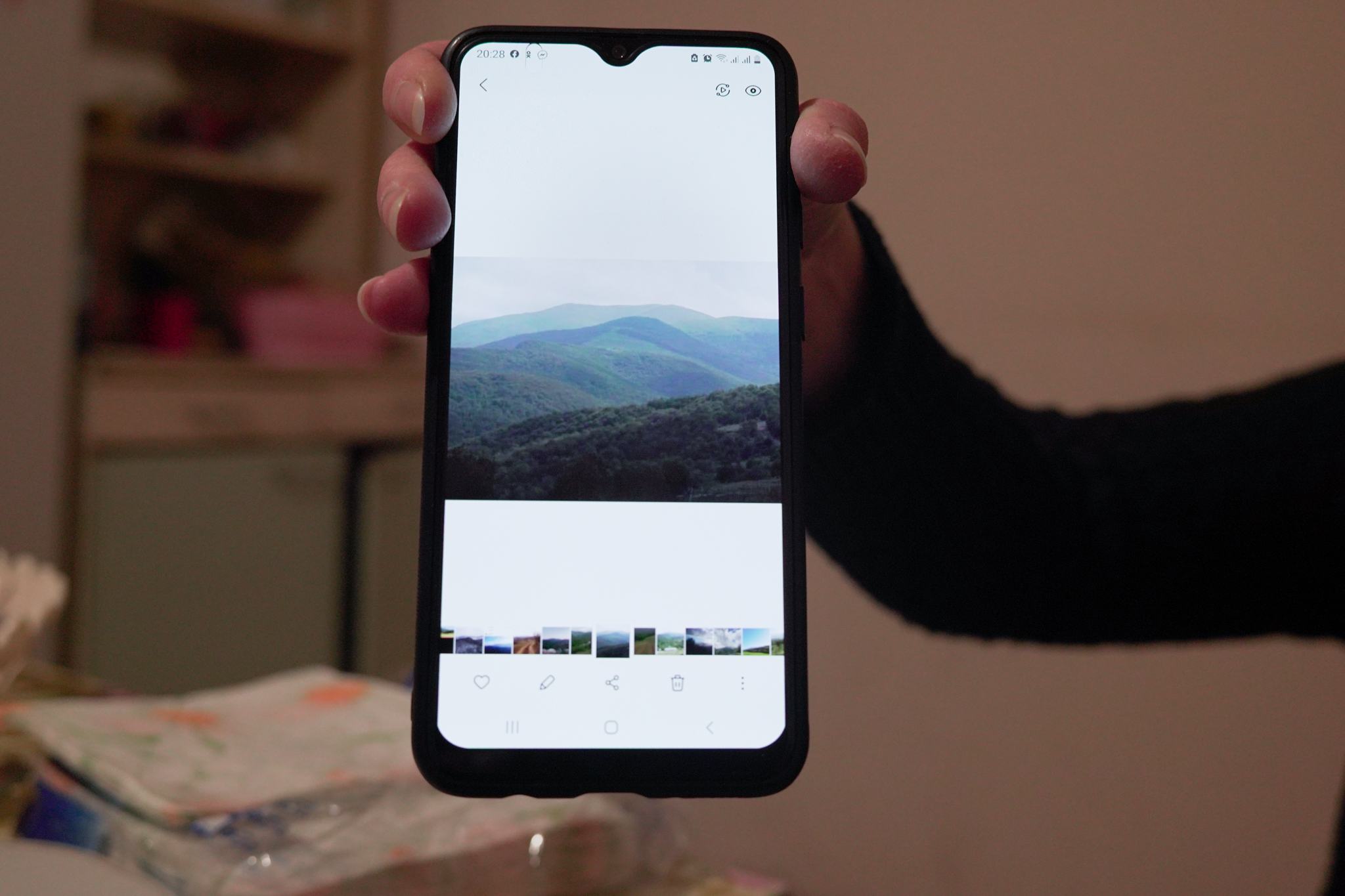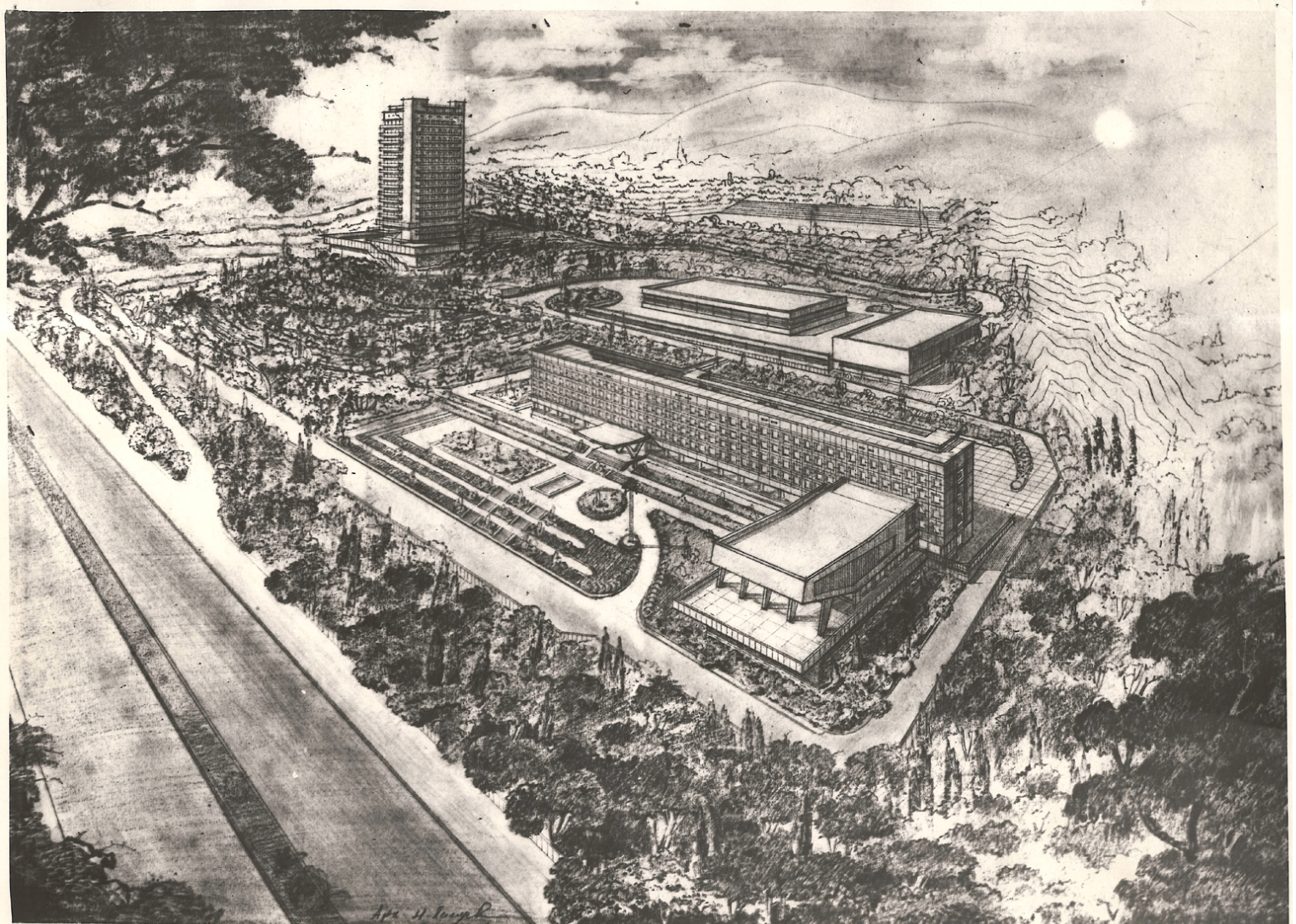In 2006, Nino Guraspishvili bought 1500 square meters of land on a
hillside that lay between the Nutsubidze and Vashlijvari
neighborhoods in the Georgian capital, Tbilisi. Nino, a mother of
four, was living in a cramped apartment at the time and she intended
to build a house for her family in the fast-developing neighborhood.
Little did she expect that over 15 years later, she would remain
locked in a protracted dispute over claims to the hillside. Nino
continues to live in her original one-room apartment, while the plot
of land she had hoped to inhabit has instead become home to the
deceased relatives of internally displaced people (IDP). This
unusual case raises questions about property rights in Tbilisi, and
the fate of the hillside ultimately reflects Georgia’s unruly social
and economic developments over the past three decades since the
nation regained independence.
Nino claims the land was empty when she purchased it. The plot and
surrounding area were officially zoned as recreational land, which
meant no business — and certainly no cemetery — could be established
there. It was only after she had purchased the property that she
claims to have noticed a handful of gravesites on the plot directly
below hers. As time went on, the problem got worse.

Nino recalls how the number of graves steadily increased and began
to ascend up the hillside toward her property. Her first instinct
was to build a concrete wall, but this action fell short. “When we
returned a year later, the wall had been destroyed and there were
around 30 new gravesites established on our territory,” she said.
Everyone she turned to advised her to take the matter to court, but
she was unable to afford the legal fees. In a last-ditch effort,
Nino attempted to register the land as a cemetery; by selling
portions of it as commercial burial sites, she hoped she might
recoup at least some fraction of her initial investment. Her request
was flatly refused, as officials reminded her of the area’s
recreational zone status. It was illegal for a cemetery to operate
on her land, and yet a cemetery had taken shape.
According to Nino, no one — not the police, the state, or the
gravediggers involved — has taken responsibility for the matter. Her
case is all the more bizarre for the fact that surrounding portions
of the hillside are now managed by the municipal government as a
commercial cemetery.

“Everyone thinks that it isn’t their problem and that the case is
closed. I think when it’s a citizen’s problem, the state should get
involved,” she says. “I raised four children in one room. And why?
For the sake of what? When I had the chance to give normal
circumstances to my children and to build a normal house. They [the
IDPs] didn’t give me the opportunity to do that, and I don’t see why
I should be responsible for saving them.”
Over a dozen years have passed and yet the impasse persists: the
city won’t recognize the cemetery, Nino cannot build her house, and
the families who buried loved ones there live in uncertainty over
their fate.
****
To understand the quandary that surfaced on this hillside, it’s
necessary to return to the 1990s, Georgia’s first decade of
independence from the Soviet Union. The decade was characterized by
civil war and societal collapse, and saw a huge influx of people
displaced by conflicts in Abkhazia and South Ossetia. Social
provisions were scarce, and many of the displaced, commonly referred
to as IDPs, were forced to squat in repurposed buildings that were
unsuitable for long-term housing. The government, wracked by
conflict, lawlessness and corruption, had few resources with which
to attend to the displaced. IDPs were largely on their own.
Often, those who fled their homes in Abkhazia and South Ossetia did
so suddenly in the belief that they would return. In addition to
losing their homes, land and possessions, they were forced to leave
behind generations of their ancestors buried in family plots. IDPs,
like most of the population of Georgia, typically follow the
Georgian Orthodox faith, which considers soil to be sacred.
The religion ordains that the dead be returned to the soil, and
significant events in the Orthodox calendar involve graveside
visits. For instance, long Easter holidays are capped by visits to
the cemetery to pay respects to one’s deceased.

“Graves are a means of being reunited with the soil,” social
researcher Nana Chabukiani writes in her journal article,
Ancestor Worship and Disrupted Continuity among IDPs in
Georgia.
“Soil is crucial as it is a
source of the future — people are created from soil — and it also
represents the past — ancestors turn into soil after their burial.
Through burial at the place where people lived, the continuity of a
community can be sustained; but this continuity is disrupted by
displacement, making it more difficult for IDPs to adjust to the new
place of residence.”
Not only
does out-of-placeness persist in the daily lives of many IDPs, but
the inability to be buried in their native soil prolongs this sense
of restlessness and indeterminancy after death. “In Georgia, most
rituals are tied to the home and graveyard,” anthropologist Keti
Gurchiani observes. “The body is the soul long after death. It
should be brought home, where the soul will remain. Months, if not
years after a burial, families attend to the deceased as a
combination of body and a soul.”
When IDPs settled in Tbilisi, not only were they unable to fulfill
obligations to their deceased family members — they struggled to
find an accessible place to bury those who later passed away in the
city. Plots of land in Tbilisi’s cemeteries were often prohibitively
expensive, and IDPs were confronted by the problem of how and where
to settle their deceased. “The 1990s was a period marked by chaos,
corruption and the absence of the rule of law and public
institutions,” urbanist Irakli Zhvania notes. “A lot of people did
whatever they wanted to do by ignoring any kind of regulations or
laws. Or maybe simply, such regulations did not exist.”
A former deaf-mute shelter sits at the base of the cemetery, and
offers a clue to its origins: since 1993, the building has housed a
community of internally displaced people. Oleg Khajomia was among
the first few families to settle there. At the age of 21, he fled
his hometown of Ochamchire on the last train out of Abkhazia, and
eventually settled at the repurposed shelter with 10-20 other IDP
families. The hillside was wild, and without access to electricity
or heating, the IDPs scavenged for firewood in the nearby forests of
Lisi Lake.
“There was nothing
here. No beds, no cutlery, nothing at all. The army entered
alongside us. Then the army left, and people began to be born here.
The population grew increasingly large, and now there’s not enough
space,” Oleg says.
Oleg rests on the front steps of the building’s entrance, which
faces directly onto a view of the cemetery. Today, the former
deaf-mute shelter is home to approximately 150 families. For the
building’s residents, life and death exist in close proximity. Many
of the graves, like houses, contain a social space — benches and
chairs in which to receive guests — and offerings of food, flowers,
and glasses of wine are left behind as gifts to the deceased.

According to Oleg, the first person to bury their dead on the
hillside was a resident of the shelter. These days, acquiring a
burial site requires proof of death from an authorized agency,
typically the ambulance services. In the mid-1990s, when the state
struggled to provide the most basic services for the living, the
provision of death certificates was overlooked. Like every other
aspect of their preliminary experience in displacement, the matter
of burial was self-directed and organized informally.
At the time, IDPs lived in a state of suspended hope for their
return. “We thought that today, or tomorrow, we would take them back
out,” Oleg says. Initial burial sites were shallow, and the burials
were performed in such a way that — should the path to Abkhazia
reopen — the bodies could be easily exhumed for their return.
Three decades on from his displacement, Oleg continues to hold hope
for a way home. Sympathetic Abkhazians send him photos and videos of
his native town. “Time has stopped there,” he reflects. Nonetheless,
if given the chance, he would venture to move his ancestors buried
in Abkhazia to Tbilisi — after 30 years, the ability to access their
gravesites and perform religious duties has taken precedence over
their burial location.
The
exhumation and evacuation of ancestors in occupied regions presents
a formidable logistical challenge. However, it appears that a few
have found a way; Oleg says he knows at least one individual who,
with great difficulty, managed to smuggle his parents’ bones in a
small box from Abkhazia to Vedzisi Cemetery a handful of years
ago.
After the first person was
buried, news of the hillside’s availability for burials began to
spread among neighboring IDPs. When Fatema Darsalia’s father-in-law
died, she laid him to rest there.
‘In 1999, the land was free: they said just bring your dead here. It
was a dreadful neighborhood with tall grass, languishing in rubbish.
Now it’s like a miracle — it’s the most prestigious neighborhood,”
she says.
Fatema, an IDP from
Abkhazia who lived in the Nutsubidze area for 15 years, has buried
several of her relatives there. Today, she lives in a small, private
house where she raises farm animals near the town of Rustavi. She
acquired this home after a convoluted struggle with the state
ministry for IDPs; in 2010, she and 14 other IDP families were left
on the street for 197 days after their homes in Nutsubidze flooded
following nearby construction. Her mother died during that period of
homelessness, and she was also laid to rest in the hillside
cemetery. A few years later, her deceased mother was once again
threatened by the prospect of displacement.
"In 2010, I buried my mother. In 2014, my brother. And soon after
that, a letter appeared from that woman, stating that that land was
hers. There’s a line there, and above that line there’s a commercial
cemetery. Down below, it’s ours. They showed us the line then: you
don’t have the right to go beyond here, they’ve bought the land. But
below that it was ours, wasn’t it? So why did they sell it? They
thought no more IDPs would die?”
Fatema contends that the hillside was originally granted to a
resident of the former deaf mute shelter by Tbilisi’s City Hall. She
draws on the logic of cemetery planning in Georgia, which holds that
a burial site can be used for burials again after a period of 15
years: “I know that it’s acceptable to build a new cemetery on an
older one, and since there was already a prior cemetery there, that
was why they gave us this one.”
Both Oleg and Fatema mention the existence of this older cemetery on
the hillside. Sure enough, two graves still stand at the far end —
at the base of what is now a car wash facility —with dates of death
from the 1940s to the 50s. The rest are no longer visible, as Fatema
claims that a nearby, half-developed housing block has been built
directly over them. "A cemetery, 50 years old, I asked them…is this
acceptable? You wouldn’t step on top of a cemetery, would you? This
is the same thing. There were a lot of them, fenced off,” she
recalls.
***
Today, the cemetery is almost out of space. Nino Guraspishvili has
finally acquired a team of lawyers and is preparing to take the land
dispute to court. She is requesting that either the authorities
grant her another, similar piece of land; that they compensate her
with the land’s current worth; or otherwise, that the dead be
exhumed from her property.
“The
state has resorted to all kinds of hand-grinding to avoid conceding
the illegality that has taken place,” Nino’s lawyer, Mamuka
Qavlashvili, comments. They have applied to court to resolve the
case; by law, there should be a maximum two-month duration to
process and deliver a result for such claims, but his legal team
have been waiting for well over a year.
There are various reasons why authorities may be reluctant to
process the case. According to Mamuka, one might be a reaction to
the sensitivity around burial sites in Georgian culture; whilst
Tbilisi’s municipal government have been unrestrained in their
evictions of IDPs from territories that could be put to more
lucrative ends, interfering with a burial site for the dead could
provoke a stronger public backlash — a place of residence may be
liable to change, but a gravesite is intended to be the body’s final
resting place. “Ultimately, the state doesn’t want another noisy
media event, because the great majority of those gravesites belong
to IDPs,” Mamuka says. “You can imagine what a sensitive issue it
is, the matter of exhuming dead bodies and moving them elsewhere.
That’s why the state is avoiding the performance of its duty.”
Chai Khana tried repeatedly to reach Tbilisi City Hall for comment
to no avail.
***
For the IDPs, Vedzisi cemetery holds space for the expression of
grief, and provides a community in exile. In burying their relatives
there, the IDPs have begun to tentatively engender a bond with this
once-unfamiliar soil. When asked whether he would consider moving to
a different neighborhood, Oleg shakes his head. “I’d prefer to stay
here, because all of my people are buried here. Where should I go? I
have no interest in partying and having fun. If I go, I go up there
[to the cemetery].”
“When you haven’t seen a person for so long and you go there and you
cry, it relieves your heart a little,” Fatema explains. “When I
would return home from funerals, I would say I took pleasure in my
day. My husband makes fun of me — he says 'woman, what are you
saying? You were at a funeral.’ But I saw my people, and I cried! It
relieved my heart a little, that we sat together, and we cried. That
is my pleasure; I’m not pleased that they died.”





